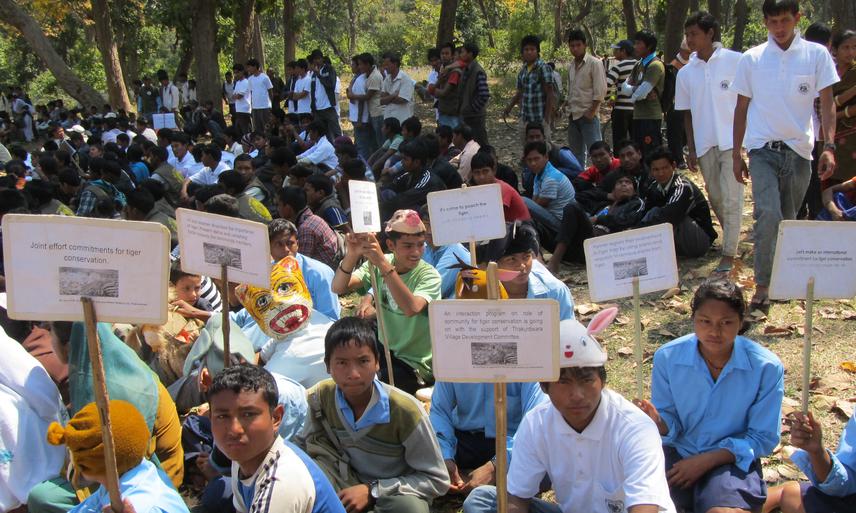Shailendra Kumar Yadav
This project aims to compare the abundance of tiger’s prey density and the seasonal diets of tigers in the southwestern of Bardia National Park (BNP) and in the Bardia-Katarniyaghat wildlife corridor.

A glimpse of Tiger Conservation Drama and Tiger Rally Campaign
Conserving corridors are mainly for “repairing” fragmented habitats and restoring biodiversity. The concept of corridor is to restore habitat quality in order to facilitate the movement of long range fauna (tiger, rhino, elephant, common leopard) between protected areas (PAs). In Nepal, the effectiveness of the Bardia-Katarniyaghat corridor is disappearing due to anthropogenic pressure (such as unmanaged grazing practice, fuel wood and fodder collection, illegal hunting, poaching, fire, encroachment and natural disaster such as annual flooding). As a result, the number of tigers is decreasing. At the same time, the human-tiger conflict has been increasing due to high livestock losses and human fatalities. If the situation continues, it will not only intensify the vulnerability of the people living around the corridor but also jeopardize the survival of this endangered species. Thus, this is a serious concern that needs immediate management intervention.
Until recently, most of the conservation and management programs have been centred within protected areas and buffer zones, resulting insufficient data for corridor management. Key species and critical habitats should be managed through positive feeling and aspirations of local communities. This study aims to assess the current status of the megafauna, focusing on tiger and its prey. Also, the conservation issues and human-wildlife interactions as well as awareness level will be assessed through a questionnaire survey and interviews with local inhabitants and key management institutions. It will compare the abundance of tigers and their prey and the seasonal diets of tigers. Genetic identification of individuals from non-invasive sampling of scats combined with camera trapping will be used for estimation of tiger abundance. Densities of prey species will be estimated by distance sampling, and seasonal diets of tigers will be estimated from micro-histological analysis of scats. The status of human-wildlife interaction and management conflicts will be assessed through interviews and a questionnaire survey of local inhabitants and institutions. A Corridor Conservation Group (CCG) will be formed for sustainable conservation of the wildlife corridor. Known threats will be controlled and managed by mobilizing local youth involved in CCG. The distribution, age and sex composition of the tigers in the corridor will provide information on the functional use of the corridor and develop individual tiger profiles for long term monitoring. The density and distribution of prey species will be determined from Distance sampling, Together with knowledge of seasonal diets; this information will provide a basis for guidelines for proper tiger habitat management.